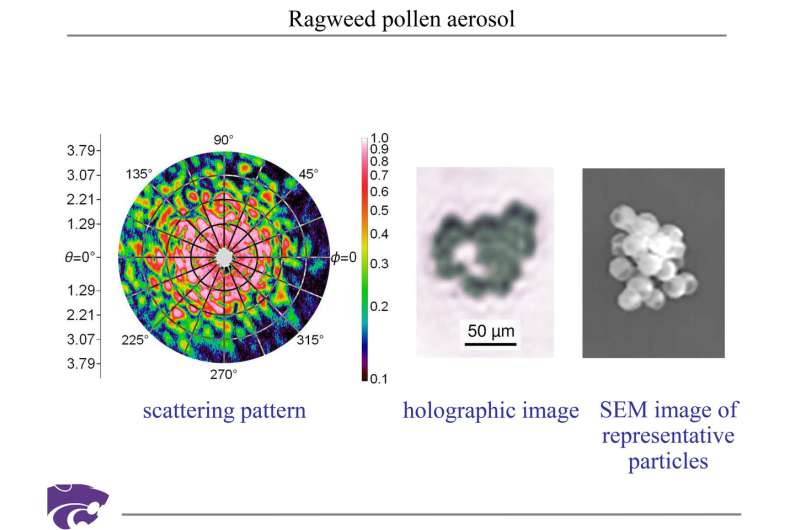Researchers identify free-flowing aerosol particles using holograms, lasers

Holographic images of free-flowing air particles may help climate change and biological weapons watchdogs better monitor the atmosphere, according to a recent Kansas State University study.
Principle investigator Matthew Berg, associate professor of physics, said the study, published in Nature's Scientific Reports, is key to understanding the aerosol composition of Earth's atmosphere.
"We have these small little chunks of particles floating around in the air and people want to know what they are made of, but if we disrupt them, it might change their form," Berg said. "Until now, there hasn't been any unique and confident way to confirm particle size and shape properties in their natural form. We have solved the inverse problem."
Referring to a problem that is worked backward from results to cause, Berg said before this study, the inverse problem with aerosol particles was largely educated guesswork based on mathematical calculations. Researchers could not objectively define free-floating aerosol particles because merely capturing a particle and looking at it under a microscope could change its physical shape or size. Now, they can bounce light waves off the particle and measure the deflection.

The method explained in the publication takes holographic images of particles as they float through the air using two overlapping lasers: one red and one green. The green laser is the traditional method that can be used to measure the light deflection; by providing the red laser, they also get a 3-D image that can subjectively account for a variety of particle shapes.
"We get the two properties—size and shape—that we've always wanted to get," Berg said. "We still have all the advantages that people had with the last 50 years—light scattering, contact free and measurements can be done rapidly—and then we can put it on an instrument and fly it around in the air."
Berg is working to put the laser setup on an unmanned aircraft to measure free-flowing aerosol particles in the atmosphere. Removing the particles from their natural environment can change the particle form, Berg said. For example, if the particles are frozen in the atmosphere and scientists collect them to bring them back to the ground to study, the particles could melt and change their shapes and sizes.
"If we think about climate science, they want to know the size and shape of particles floating in the atmosphere," Berg said. "This information can help climate scientists account for how much sunlight those particles scatter back into space or absorb—and if they absorb, by how much will it heat up the surrounding atmosphere."
More information: Matthew J. Berg et al, Solving the inverse problem for coarse-mode aerosol particle morphology with digital holography, Scientific Reports (2017). DOI: 10.1038/s41598-017-09957-w
Journal information: Scientific Reports
Provided by Kansas State University




















